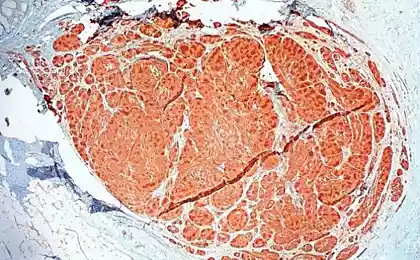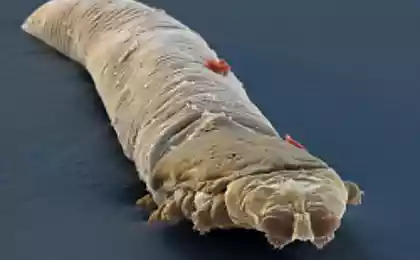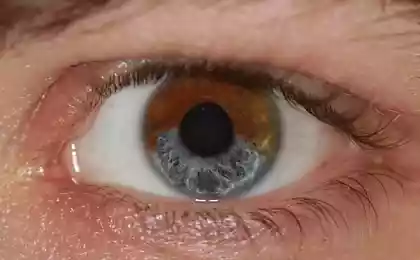468
Stem cells of the cornea is effective for transplantation
With the help of a particular protein can get so many stem cells of the cornea as necessary for successful healing of injured cornea.
Constant contact with the external environment is wasted to the cornea – it fabric is easily damaged and therefore should be updated. If this does not occur, or the damage was too extensive, there is a risk of losing your sight. However, the cornea has no blood vessels, and therefore, the exchange processes are not too fast. Update the same cells of the cornea occurs due to the vessels of the limb, a thin layer of epithelium that separates cornea from the protein shell of the eye.
You can perform recovery artificially transplanted on the damaged area ready healthy tissue. But to restore the desired stem cells, and in the case of the cornea still nobody exactly knew whether her transplant limbal stem cells and, if so, how much.

A group of scientists on the basis of several medical institutions at Harvard University have found stem cells in the limbus of the cornea special marker ABCB5 protein. Using antibodies to ABCB5 can be extracted from biological material these cells to use for transplantation.
"Limbal stem cells are quite rare, and successful transplantation depends on the number of these cells, says Bruce ksander, co-author of the Massachusetts Institute of ear and eye (Massachusetts Eye and Ear/Schepens Eye Research Institute). – This finding much easier to restore the corneal surface. This is a very good example where fundamental research is quickly moving in the applied area".
The same researchers previously demonstrated that ABCB5 have progenitor cells in the skin and intestine. In new work it was shown that mice, which were not functioning ABCB5 gene lost their own limbal stem cells, and the cornea is very poorly regenerates after damage. If these mice were transplanted ABCB5-positive limbal stem cells of human, cornea animals recovered quickly.
"ABCB5 allows stem cells to survive, protecting them from apoptosis (programmed cell death)," says Markus Frank of Boston children's hospital. According to Natasha Frank (Boston healthcare center, VA Boston Healthcare System), research on mice allowed us for the first time to understand the role of ABCB5 in normal development, and therefore the obtained results are very important for stem cell research in General. Currently the authors are trying to create antibodies against ABCB5, which can be applied in everyday medical practice.
Source: nkj.ru
Constant contact with the external environment is wasted to the cornea – it fabric is easily damaged and therefore should be updated. If this does not occur, or the damage was too extensive, there is a risk of losing your sight. However, the cornea has no blood vessels, and therefore, the exchange processes are not too fast. Update the same cells of the cornea occurs due to the vessels of the limb, a thin layer of epithelium that separates cornea from the protein shell of the eye.
You can perform recovery artificially transplanted on the damaged area ready healthy tissue. But to restore the desired stem cells, and in the case of the cornea still nobody exactly knew whether her transplant limbal stem cells and, if so, how much.

A group of scientists on the basis of several medical institutions at Harvard University have found stem cells in the limbus of the cornea special marker ABCB5 protein. Using antibodies to ABCB5 can be extracted from biological material these cells to use for transplantation.
"Limbal stem cells are quite rare, and successful transplantation depends on the number of these cells, says Bruce ksander, co-author of the Massachusetts Institute of ear and eye (Massachusetts Eye and Ear/Schepens Eye Research Institute). – This finding much easier to restore the corneal surface. This is a very good example where fundamental research is quickly moving in the applied area".
The same researchers previously demonstrated that ABCB5 have progenitor cells in the skin and intestine. In new work it was shown that mice, which were not functioning ABCB5 gene lost their own limbal stem cells, and the cornea is very poorly regenerates after damage. If these mice were transplanted ABCB5-positive limbal stem cells of human, cornea animals recovered quickly.
"ABCB5 allows stem cells to survive, protecting them from apoptosis (programmed cell death)," says Markus Frank of Boston children's hospital. According to Natasha Frank (Boston healthcare center, VA Boston Healthcare System), research on mice allowed us for the first time to understand the role of ABCB5 in normal development, and therefore the obtained results are very important for stem cell research in General. Currently the authors are trying to create antibodies against ABCB5, which can be applied in everyday medical practice.
Source: nkj.ru























